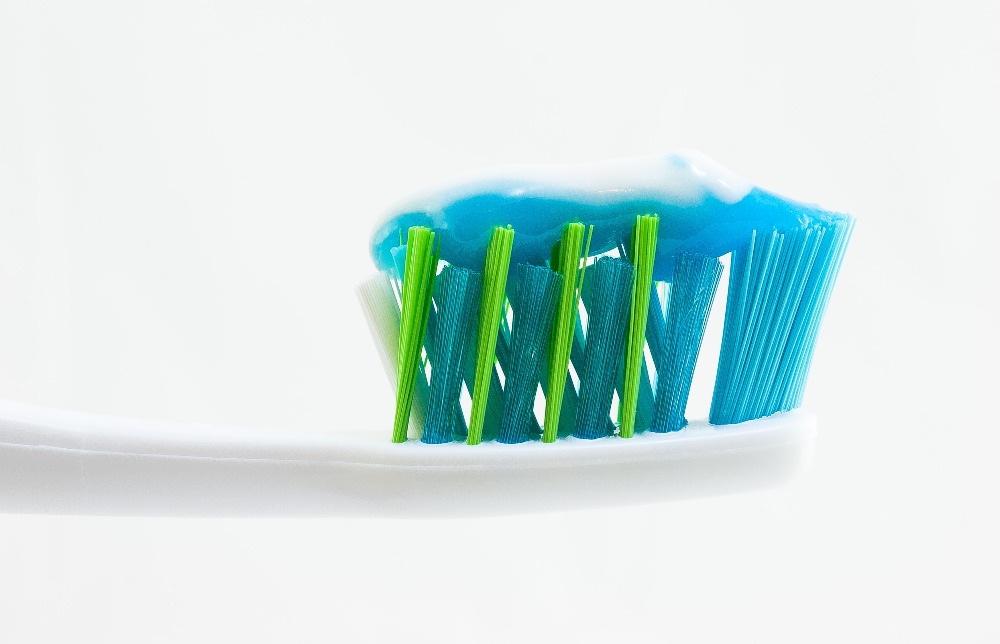April is National Oral Health Month! This is Part 2 of a 4 part series about everything to do with oral health.
April 23rd, 2021

Building on last week's post, today we'll take a closer look at 2 ingredients commonly found in conventional toothpaste, mouthwash, etc. Again, this post is not meant to replace medical or dental advice. But, it is my hope that I raise awareness and inspire you to take a closer look at what you put on your toothbrush and in your mouth!
1) Fluoride
The history of fluoride in the world of dentistry is quite interesting, you can read it here.
Fluoride can be perceived as "controversial"for the following reasons:
While a little bit of fluoride is great for preventing and reducing dental cavities, more fluoride is not better! Fluorosis is an important public health problem in 24 countries, including India, which lies in the geographical fluoride belt that extends from Turkey to China and Japan through Iraq, Iran, and Afghanistan.
With the widespread availability of fluoridated toothpastes and fluoride varnishes as well as fluoridated drinking water, there is a potential for enamel fluorosis or skeletal fluorosis. According to the 2018 CDC statistics, 73% of the US population have access to fluoridated water. Per Statistics Canada, 37.4% of the Canadian population had access to fluoridated drinking water. In Ontario, this number goes up to 76%. Prior to this blog post, I did not realize we were getting fluoride from so many places.
Sources of fluoride include:
While I am certainly not suggesting that you stop using fluoride toothpaste, this is an opportunity to consider:
2) Sodium Lauryl Sulfate
Sodium Lauryl Sulfate, also known as SLS, is often used as a cleansing or foaming agent. It is ubiquitous and found in grooming products, hair products, bath products, creams, lotions, toothpastes, teeth whitening products, and mouthwashes. In toothpastes, it's often added for its foaming action (as most people perceive this as the cleaning action).
For toothpastes which contain sodium fluoride, SLS is also added to prevent the fluoride ions from reacting with the silica abrasives which decreases the amount of fluoride available for cavity prevention.
According to the Environmental Working Group (EWG), there is strong evidence to suggest that SLS is an irritant to the eyes, skin, or lungs. In one study, the use of SLS-free toothpaste reduced the healing time and reduced pain with canker sores. If you suffer from frequent canker sores (i.e. mouth sores, aphthous stomatitis), then it may be a good idea to consider using an SLS-free toothpaste.
3) Other ingredients to watch out for:
The colouring used in kids' toothpastes (e.g. FD&C Blue No. 1 or D&C Blue No. 4).
Sodium saccharin - derived from coal tar, this product is extremely sweet and only serves to improve the flavour of toothpaste. It has not been linked to any benefits effects on oral health.
What I'm doing in my own household:
Now that you know what you know, what do you plan to do? Drop me a line!
Note: this post and website receives commissions on purchases made through the Amazon Affiliate Program. This means that a commission is paid to me at no additional cost to you when you make a purchase by clicking any or all of the above links through Amazon.
- Janet
Links and Citations:
Carey CM. Focus on fluorides: update on the use of fluoride for the prevention of dental caries. J Evid Based Dent Pract. 2014;14 Suppl:95-102. doi:10.1016/j.jebdp.2014.02.004
Unde MP, Patil RU, Dastoor PP. The Untold Story of Fluoridation: Revisiting the Changing Perspectives. Indian J Occup Environ Med. 2018;22(3):121-127. doi:10.4103/ijoem.IJOEM_124_18
Grant WB. High vitamin D and calcium requirements during pregnancy and tooth loss. Am J Public Health. 2008;98(11):1931-1932. doi:10.2105/AJPH.2008.144451
What is Sodium Lauryl Sulfate?
Copyright © 2021 JCL Wellness.
All rights reserved.